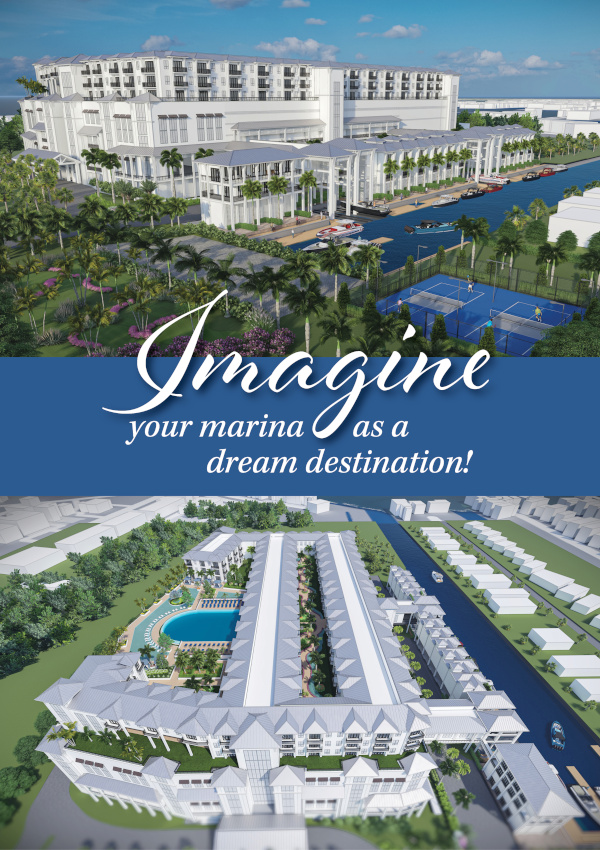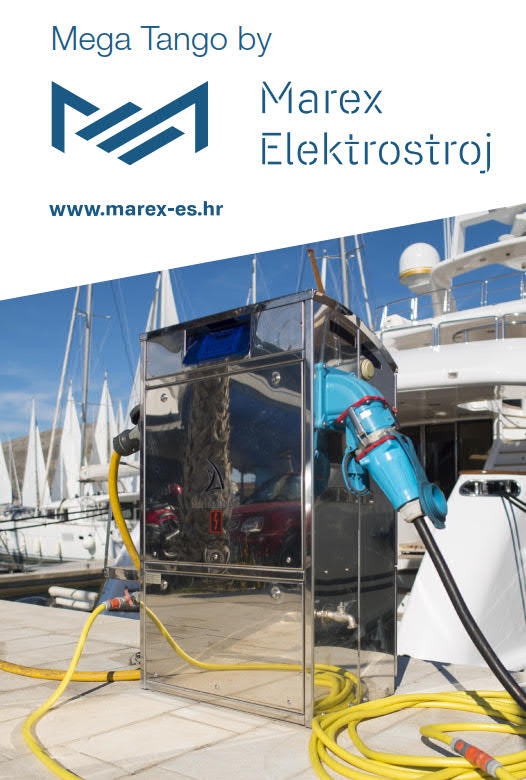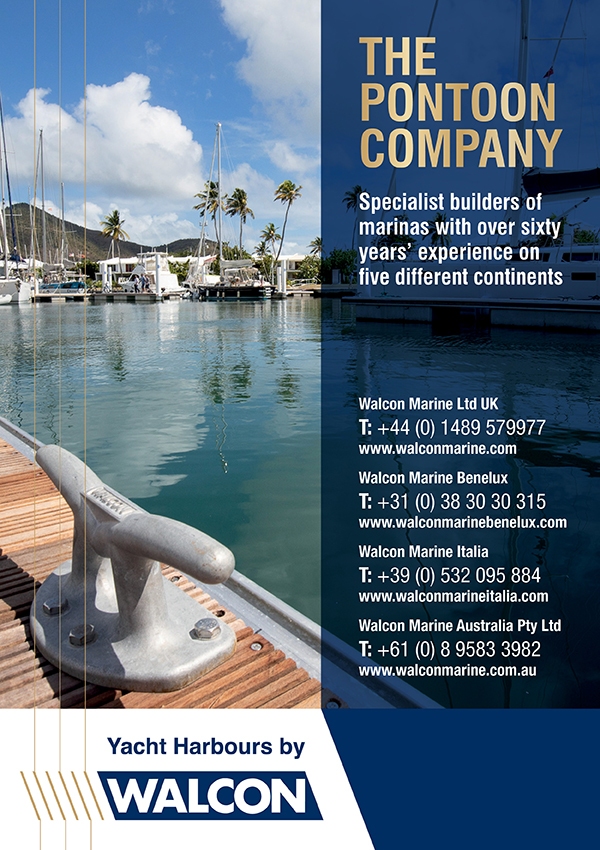A boat that glitters is not gold
by Oscar Siches
The well known saying ‘all that glitters is not gold’ dates back, at least, to the 16th century and William Shakespeare’s version ‘all that glisters is not gold’ is a memorable line in “The Merchant of Venice”. Coincidentally, Venice was home to the first superyacht, the ‘Bucintoro’ (Bucentaur in English). She was 35m (117ft) long, had 168 rowers and capacity for 90 seated guests, and was exclusively used by the Doge to greet ambassadors and high ranking personalities of the times. And every year, aboard ‘Bucintoro’, the Doge celebrated the union of Venice with the sea by throwing his previously blessed ring into the waters of the Adriatic.
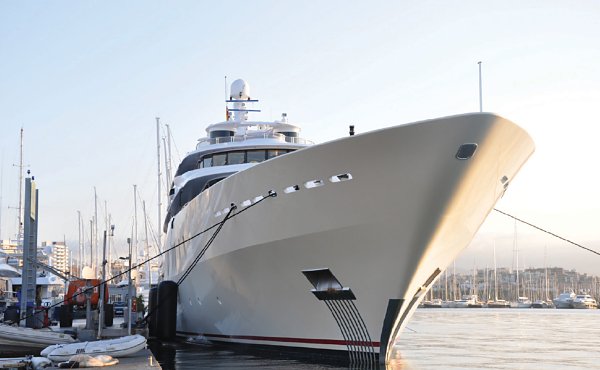
Big yachts pay big berthing money, consume large amounts of electricity and generate many parallel lines of income by bunkering, transportation and other concierge services, but how long does the marina benefit from such bonanza, and what are the minimum requirements for attracting big yachts? Does the result justify the efforts? Not always.
Size
To have a berth of 50m x 10m (164ft x 33ft) alongside is not the same as having 13 berths of 10m x 3.5m (33ft x 11ft). The surface area occupied is the same but the space needed for manoeuvring a big yacht is a lot larger. Just imagine those 10m boats berthed stern-to. They need a minimum of 1.5 and ideally 1.75 times their own length of free water in front of them to manoeuvre (fairway). For the row of 13 berths the total surface area needed will be 50m x 17.5m = 875 m² (9,500 ft²). If we have a 50m yacht, at some stage we must leave a circular area of 75m (246ft) diameter free for manoeuvring, which is 4,415m² (47,500ft²). Uups! Yes, the need for surface area increases exponentially when yachts become longer.
Occupation
If you manage to secure a superyacht on a full year contract, the use of space will be as planned, but if you do not achieve the forecasted occupation rate, that waste of space will be a heavy load on the marina financial results. Bear in mind that if the surface is occupied by multiple smaller boats, loosing a few of them will not generate a significant loss, and the possibilities of filling those berths up again are high. It does not matter how you look at it, the space needed to berth a superyacht is always a lot bigger than for berthing smaller yachts, even if the sum of the occupied water surface area is the same as the area of the large yacht.
If the big yachts winterise in the marina, most of them will certainly go away to the boatyard for antifouling, hull inspection and general maintenance and that will last two months, between October and April. Will the captain/manager ask for those months to be refunded? Probably. Hardly any big yacht arrives for winterising after the beginning of autumn so the chance of new occupation for winter works is zero.
Ashore
Wide piers and parking space next to the superyacht are mandatory elements for success. But providing parking for the captain, chef, steward and guests who need/want to park next to the boat gangway is the easy part. If yachts over 500GT request ISPS treatment, a series of measures (like enclosing the pier area around the yacht and providing access control) will have to be implemented.
Traffic
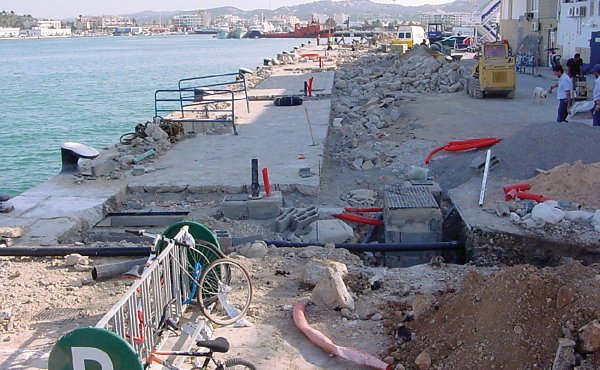
Upgrading a marina to offer superyacht berthing can be a major undertaking.
Toys
And then come the toys, articles that keep the guests in touch with the city they wanted so badly to leave and forget for a couple of weeks. Bicycles, Vespas, electric scooters, Segways, and in the water windsurfs, inflatables, jet skis, powerboats. All occupying space. And they have to be kept clean and tidy, all adding extra activity on your pier.
Garbage
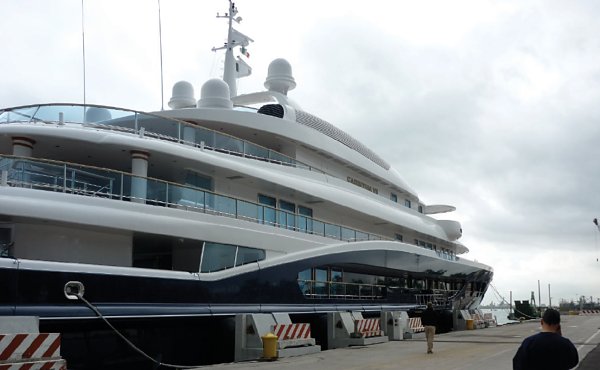
Power
Lots of power. An 80m (260ft) yacht will consume as much electricity as a medium size apartment tower (800KVA). It means handling middle voltage at the marina (2,000V to 35,000V), fitting transformers to reduce the section of the cables as much as possible and carrying the electricity to the pedestals. To give an idea, a 1,000KVA power line 200m (660ft) long needs 3 x 240mm² + 2 x 150mm² cables (three phase, neutral and ground). Unless very large yachts (70m/230ft+) stay for long periods in the marina, the power installation for such yachts may not be justified. Large yachts trust their own generators better and these have clean exhausts and are silent and the connection and disconnection from the shore box can take up to two hours each, as cables are big and heavy and have to be carried from the yacht to the connection point. Supplies up to 400A can use plug-and-socket configuration. From there on it must be direct connection to the bus bars, or phase-by-phase high capacity single plugs. I favour connecting anything over 250A directly to the bus bars at the electrical box ashore.
Location, location, location
You can only survive by having a good high season if your location is good and interesting. Forget about featuring high street top brands and Michelin-star restaurants to attract big yachts. Big yachts owners and their guests have that every day of the year, wherever and whenever they want. Wealthy people look for what they cannot get at home – interesting nature and history, unique culture etc. A visit to a glacier in Norway, lunch in Portofino, Monemvassia in Greece, a winery in Catalonia or the Formula 1 in Monaco. If you cannot offer that, develop your marina as a winter spot for the low season from October to April. But nothing can be taken for granted and interests change because you are taking care of crew and services, not owners and guests any more. Safety and stability are essential, as is a nearby airport with international European destinations; crew entertainment (social life kicks off at 5pm every day); banks; pharmacy; gym; maintenance and repair services for engine and generators, electrics, paint, metal works, certification society inspectors, liferafts. You must offer reasonable prices not only for the berths but for the crew’s everyday life. The list goes on.
Very few areas in the Mediterranean meet all these needs. Antibes, Monaco, Palma or Barcelona fit the bill and, when Turkey stabilises, Antalya and Istanbul will again be good options.
The Monaco model
And now a strong word of advice: do not ask for “a marina like Monaco”. Monaco is possible only in Monaco, where the ruling Grimaldi dynasty started 721 years ago, the Societé des Regates was founded in 1888, the shipowners Stavros Niarchos (63m Creole) and Aristoteles Onassis (104m Christina) started the superyacht trend in the principality after WW2. Monaco was the first tax free country in southern Europe. Monaco is the Yacht Club de Monaco, founded in 1953 and running one of the best sailing schools in the world and being the strongest advocate of tradition, etiquette and yachting excellence.
Instead, trust the potential of your marina as every marina has a soul of its own. You are responsible for finding it, nurturing it and developing it. To transplant history, tradition and style is impossible. Marinas must grow their own potential.
Integration by design
You must interact with the local community and make the marina a part of the city, and not an isolated alien spot. Of course we do not have to design public parks with berths, but a balance should be achieved to allow the public to enjoy children’s playgrounds, bars, restaurants and shops while keeping enough privacy at the piers.
A quick look back
Venice’s ‘Bucintoro’ was a symbol of its dependence on and beneficial relation with the sea. Only the Doge and his guests were allowed onboard but when she was out performing her duties as a floating palace and sailing back to berth at San Marco Wharf the whole city enjoyed the spectacle. We don’t need to invent very much, we must just look back in history.

